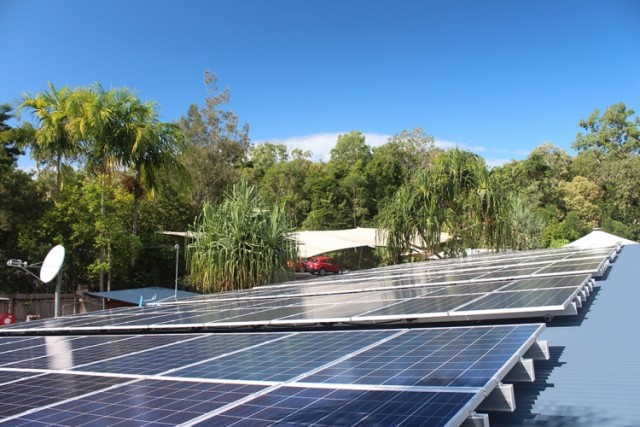|
Favourable economics for solar and storage in Australia are defying the odds that the Abbott-led administration appears determined to stack against them. Australian prime minister Tony Abbott is like King Canute, standing on the shore commanding the tide of renewable energy and energy storage not to come in. But no matter how much he rails against the future, this prime minister is way too late to stop the tide of progress. A range of factors are coming together at the same time that will see distributed solar PV combined with energy storage move into the early mainstream in the coming years – and sooner than later. The primary driver is economics. The customer’s choice The cost of solar PV has been slashed and energy storage costs are reducing quicker than most experts have forecast. Together this means solar PV plus energy storage for domestic and small business customers in Australia is closer than most commentators predict. Australians pay some of the highest electricity prices in the world. Amortised over its lifetime, solar PV is already much cheaper than grid electricity, coming in at around AUS$0.12 (US$0.09) per kilowatt-hour versus an average grid electricity charge of AUS$0.25 per kilowatt-hour, (and some customers pay up to AUS$0.45 per kilowatt-hour). With a fantastic solar resource, and higher electricity prices, ‘solar PV grid parity’ came and went in Australia years ago. State-based solar PV feed in tariffs fuelled a solar boom. However, successive State governments have now stopped those schemes. The current export prices being offered are a backlash to the overly generous tariffs and are being used to discourage people from installing solar PV. The average export price paid for excess solar energy fed into the grid is now AUS$0.08 per kilowatt-hour. Some states don’t require any payment at all for this solar electricity. So, for example, a customer who invested in a solar system in New South Wales in 2011 under a generous feed in tariff payment will see those payments stop in the next 18 months. Because New South Wales has no mandated minimum export price, hundreds of thousands of customers will go from a AUS$0.60 per kilowatt-hour tariff to nothing at all. So the choice the customer faces is this; should I donate that excess energy to the bottom line of my power company, or install energy storage to capture and use that energy myself? When considering energy storage there are two major costs. The first is the cost of the battery and the second is the cost of the energy that feeds the battery. If your power company will not pay you anything (or a very small amount) for your exported solar energy, the marginal cost to feed the battery is very low. So, for a customer in this position, the only cost they need to consider is the cost of the battery. If they are paying average energy rates- the daily fixed charge and the energy charge- any battery solution cheaper than the energy charge puts them ahead financially. Already there are domestic scale lithium ion batteries available with an effective life time cost of less than AUS$0.30 per kilowatt-hour. Just a starting point?
The technology is already there, and the market will emerge quickly. I am aware of three companies who will launch domestic solar storage this year at or below that cost over the life of the battery. And this is just a starting point. Domestic scale battery companies understand the opportunity. Every week we are contacted by companies wanting to enter this part of the market. Competition, innovation and scale will drive reduced prices for consumers. Investment bank UBS recently reported that households that use all the electricity produced by their solar array plus storage were already getting a return of capital of 10% a year or more compared to buying power from the grid. With economies of scale in battery manufacturing, prices are forecast to fall further still in the years ahead. Some analysts are even forecasting that the payback on solar plus storage systems will halve between now and 2020. Some quick examples
Of course in Australia solar plus storage is already a no-brainer in remote and fringe of grid areas. With a huge geography and small population, maintaining extensive energy infrastructure for very few people is not economically sustainable. Solar plus storage, (plus a backup diesel generators for freak weather events) is already much more economical then maintaining hundreds of kilometres of electricity lines for small populations in many places across the country. The key question is this; will the power utilities embrace this disruptive technology, or fight it? The ironic thing is that if they chose to fight it, they will only speed up its adoption by a hostile public that wants greater energy freedom. This article is sourced from http://solar.org.au/
0 Comments
Leave a Reply. |
|


 RSS Feed
RSS Feed


